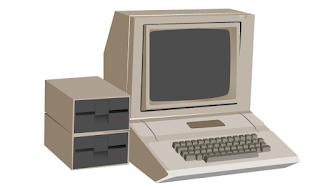Increasing PC performance – Upgrading Hardware
The
modern internet and modern software can sometimes drain the resources
of the older PC, even dual core machines.
Sometimes
software tweaks and general housekeeping can improve performance, but
if you want to really make improvements, budget permitting, physical
upgrades are always going to be your best option.
The
first place to start with your desktop PC is the power supply. This
often gets forgotten about, because most people want to make a laptop
run faster rather than a desktop, but a desktop power supply is
changeable. If your machine is, for example, a vista oem machine with
a 250watt power supply, that unit has to power the motherboard,
graphics card and all of the hdd and optical drives. Feeding power to
the equipment in the machine can be a drain on the system, so by
replacing it with a 500watt or even a 900watt will increase power
delivery and will give you the extra power if needed.
The
next place to check is your drives. Lets say that your machine still
has a floppy drive, Unless you still use floppy disks, this is
obsolete hardware and can be disconnected and where possible,
removed. When booting the pc, press 'delete' or 'f2' on standard
machines for the bios, and disable the floppy drive from the boot
list.
Next,
check the optical drive, a cd rom/cd-rw can be upgraded to a
dvd/dvd-rw drive to improve performance, a dvd drive can be upgraded
to a blu-ray drive. But if you mainly use USB flash drives, then this
is another drive that could be removed altogether. This would free up
physical space and resources for an extra hard-drive.
If
you have the finances, and want an improvement of data transfer then
the option to swap out the HDD (Hard disk drive) for an SSD (Solid
State Drive) is always available. A hard drive is a component full of
mechanical moving parts, but an SSD is similar to a stick of memory,
as it doesn't have moving parts and access to data is much faster.
This can be an expensive option, so shop around for the best prices.
If
you want to get a bit deeper into your machine, then a memory upgrade
is an excellent option. The memory in your machine is the working
environment of the PC. You increase the working environment by
increasing the memory, by increasing the amount, or installing faster
memory.
If
you have a motherboard with 2gb of memory, but the board will take
4gb, then you can increase up to 4gb. A 32bit operating system can
utilise up to 4gb of memory, and a 64bit operating system can utilize
more than 4gb
Also,
if you have, for example, DDR2 memory that is PC2-5300, then if your
machine will allow, you could possibly upgrade to PC2-6400, which is
a faster running memory
Another
option for upgrade is the CPU, or processor. The best way to upgrade
the processor is to find the manufacturer website for your machine or
motherboard, and there should be a list of supported cpu's for your
board. Simply choose a fastest one from the list that you can afford
and swap them out. There are safety procedures in regards to static,
and make sure you use paste / compound when fitting. There are plenty
of youtube vids showing how to fit a processor. If your board is a
32bit board, then this list will be short, but if you have a 64bit
board, then a quad-core maybe a viable option.
If
you still haven't spent enough money, then I would check the graphics
of your system. Most machines will probably have onboard (built in)
vga graphics, more than likely Intel chipset graphics. The main
problem with onboard graphics is that they need to use the memory
installed on the motherboard. If you fit a graphics card with its own
memory, then onboard resources are freed up. Where possible, I
recommend at least 1gb on the graphics card. Check what fitting you
have, whether it is PCI, AGP or most modern machines use PCI-E, and
choose a maker, ATI, nVidia, Asus, MSI, etc.
One
other way to improve performance is to check the air flow of your pc
case. Most pc's have a fan on the heatsink of the cpu, a fan in the
psu and maybe an exhaust fan on the rear of the case to expel the
heat created in the machine. By installing a front fan, you can
intake cool air to assist with component cooling. The only issue is
whether you want to create positive or negative pressure in your
case. The simplest way is to fit a front fan, a rear fan, and
everything is nice and even. For a demonstration of case pressures
check the link
Computer Case Airflow - https://www.youtube.com/watch?v=sh6F2eccMec
Lastly,
one of the main issues with slow computers is that they use Microsoft
operating systems (XP, Vista, W7, W8). There are many reasons why
these OS are sluggish, the main reason being that they use a registry
as part of the boot. Swapping out for a replacement operating system
can increase performance immensely.
There
are many linux operating systems to choose from, using formats very
similar to windows. They can be installed easily along side windows
or even run from a cd / dvd disk or USB drive, such as Ubuntu, Linux
Mint, or my personal favorite alternative to windows, Zorin, which
has a theme changer to make the desktop look like windows, linux or
even mac os.
I
you fancy trying linux, may I suggest http://distrowatch.com/
where
you can browse the operating systems and get opinions
Linux
operating systems are open source and free for download and use.











Comments
Post a Comment